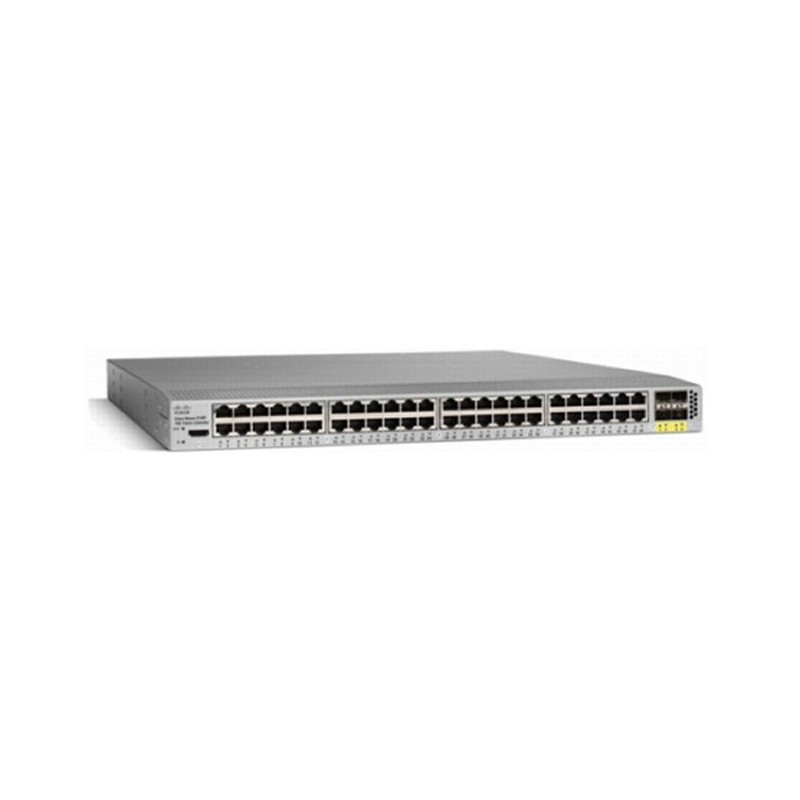The Cisco Nexus® 2000 Series Fabric Extenders comprise a category of data center products designed to simplify data center access architecture and operations. The Cisco Nexus 2000 Series uses the Cisco® fabric extender architecture to provide a highly scalable unified server-access platform across a range of 100 Megabit Ethernet, 1 and 10 Gigabit Ethernet, unified fabric, copper and fiber connectivity, and rack and blade server environments. The platform is well suited to support today’s traditional 1 Gigabit Ethernet environments while allowing transparent migration to 10 Gigabit Ethernet, virtual machine-aware unified fabric technologies.
The Cisco Nexus 2000 Series Fabric Extenders behave like remote line cards for a parent Cisco Nexus switch. The fabric extenders are essentially extensions of the parent Cisco Nexus switch fabric, with the fabric extenders and the parent switch together forming a distributed modular system. This architecture enables physical topologies with the flexibility and benefits of both top-of-rack (ToR) and end-of-row (EoR) deployments.
- Architecture flexibility: A common, scalable, and adaptive architecture across data center racks and points of delivery (PoDs)[1] supports various server options, connectivity options, physical topologies, and evolving needs.
- Highly scalable server access: 1 and 10 Gigabit Ethernet server access is scalable, with no reliance on Spanning Tree Protocol.
- Simplified operations: One single point of management and policy enforcement using upstream Cisco Nexus switches eases the commissioning and decommissioning of server racks through zero-touch installation and automatic configuration of fabric extenders.
- Increased business benefits: Consolidation, cabling reduction, rack-space reduction, reduced power and cooling, investment protection through feature inheritance from the parent switch, and the capability to add functions without the need for a major equipment upgrade of server-attached infrastructure all contribute to reduced operating expenses (OpEx) and capital expenditures (CapEx).
| AC input frequency |
50/60 Hz |
| AC input voltage |
90-264 V |
| Auto-negotiation |
Yes |
| Cabling technology |
10/100/1000Base-T(X) |
| Certification |
UL 60950-1\nCAN/CSA-C22.2 No. 60950-1EN 60950-1\nEC 60950-1AS/NZS 60950-1GB4943 |
| Colour of product |
Grey |
| Data transfer rate |
10000 Mbit/s |
| DC-in jack |
Yes |
| Depth |
449.6 mm |
| Duplex system |
Full |
| Ethernet LAN (RJ-45) ports |
48 |
| Ethernet LAN data rates |
10,100,1000 Mbit/s |
| Fiber optic connector |
SFP+ |
| Fiber ports quantity |
4 |
| Flow control support |
Yes |
| Full duplex |
Yes |
| Height |
43.7 mm |
| Input current |
1 A |
| Jumbo frames support |
Yes |
| LED indicators |
Yes |
| Maximum transfer distance |
10000 m |
| Networking standards |
IEEE 802.1Q,IEEE 802.1p,IEEE 802.3,IEEE 802.3ab,IEEE 802.3ae,IEEE 802.3an |
| On/off switch |
Yes |
| Operating altitude |
0 - 3000 m |
| Operating relative humidity (H-H) |
5 - 95 % |
| Operating temperature (T-T) |
32 - 104 °F |
| Output current |
8 A |
| Power consumption (max) |
110 W |
| Power consumption (typical) |
95 W |
| Quality of Service (QoS) support |
Yes |
| RoHS compliance |
Yes |
| Storage temperature (T-T) |
-20 - 70 °C |
| VLAN tagging |
Yes |
| Weight |
8000 g |
| Width |
439.4 mm |
Specific References
- EAN13
- 0882658486401
Cisco Nexus 2248TP-E Data Sheet




